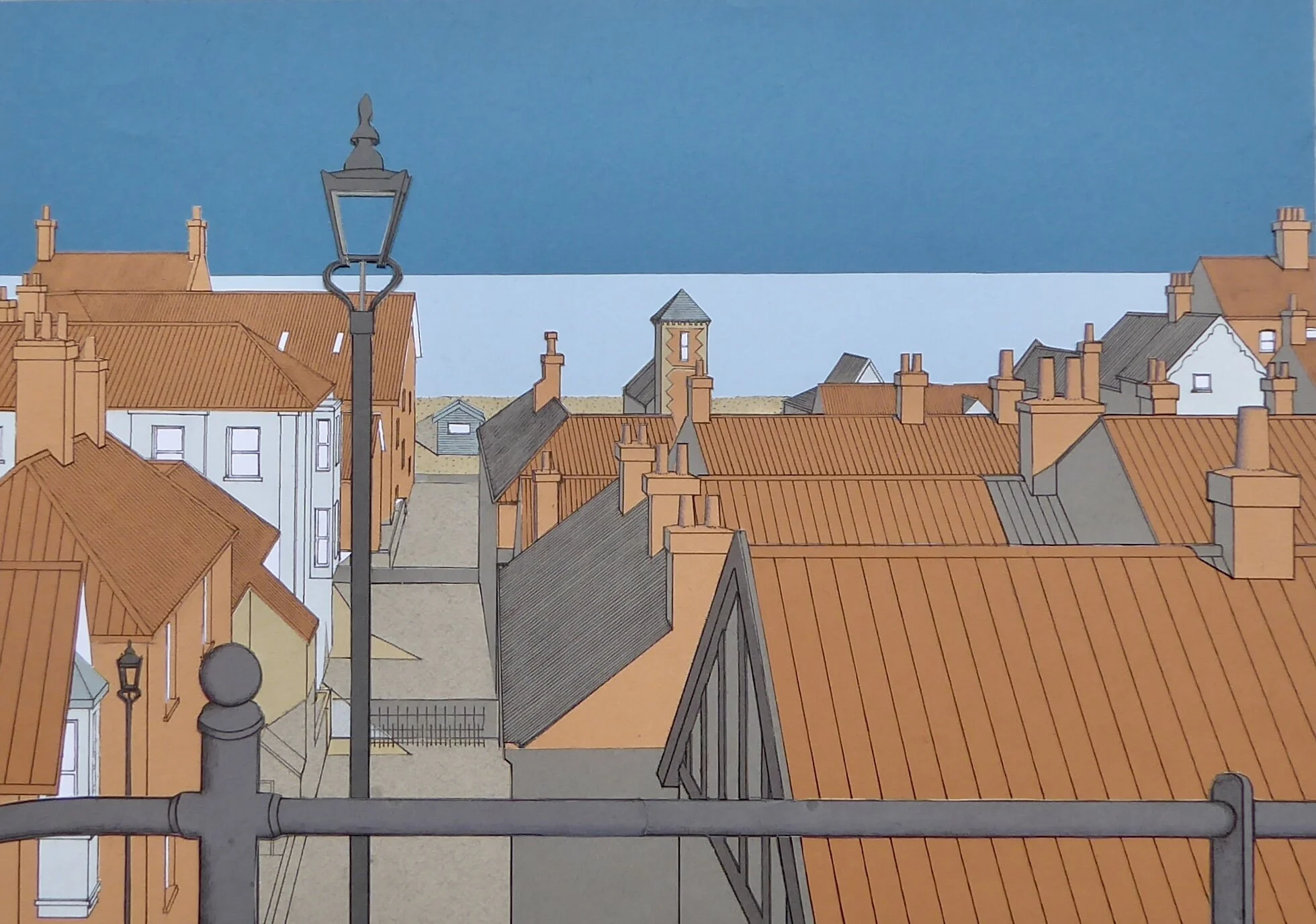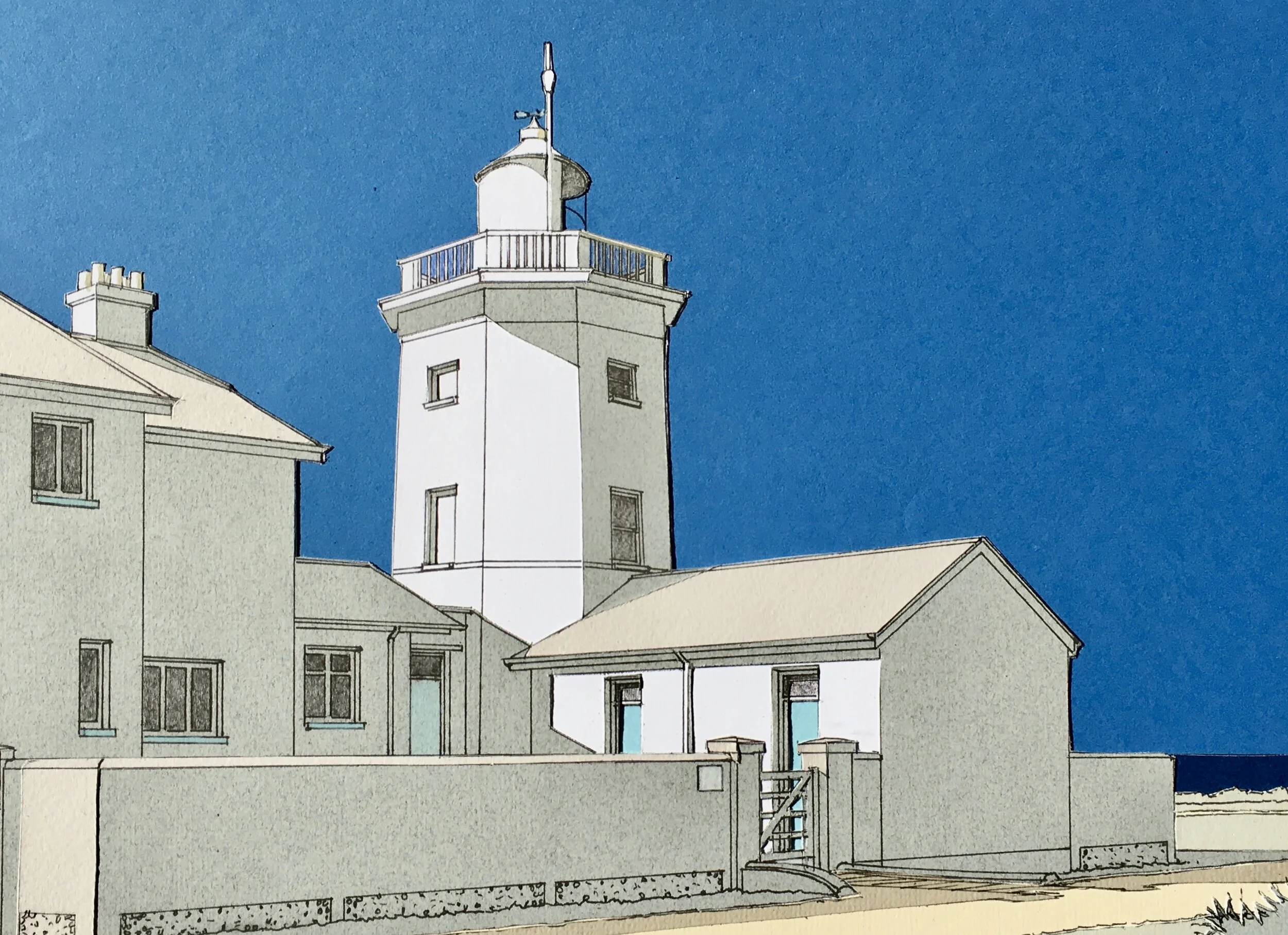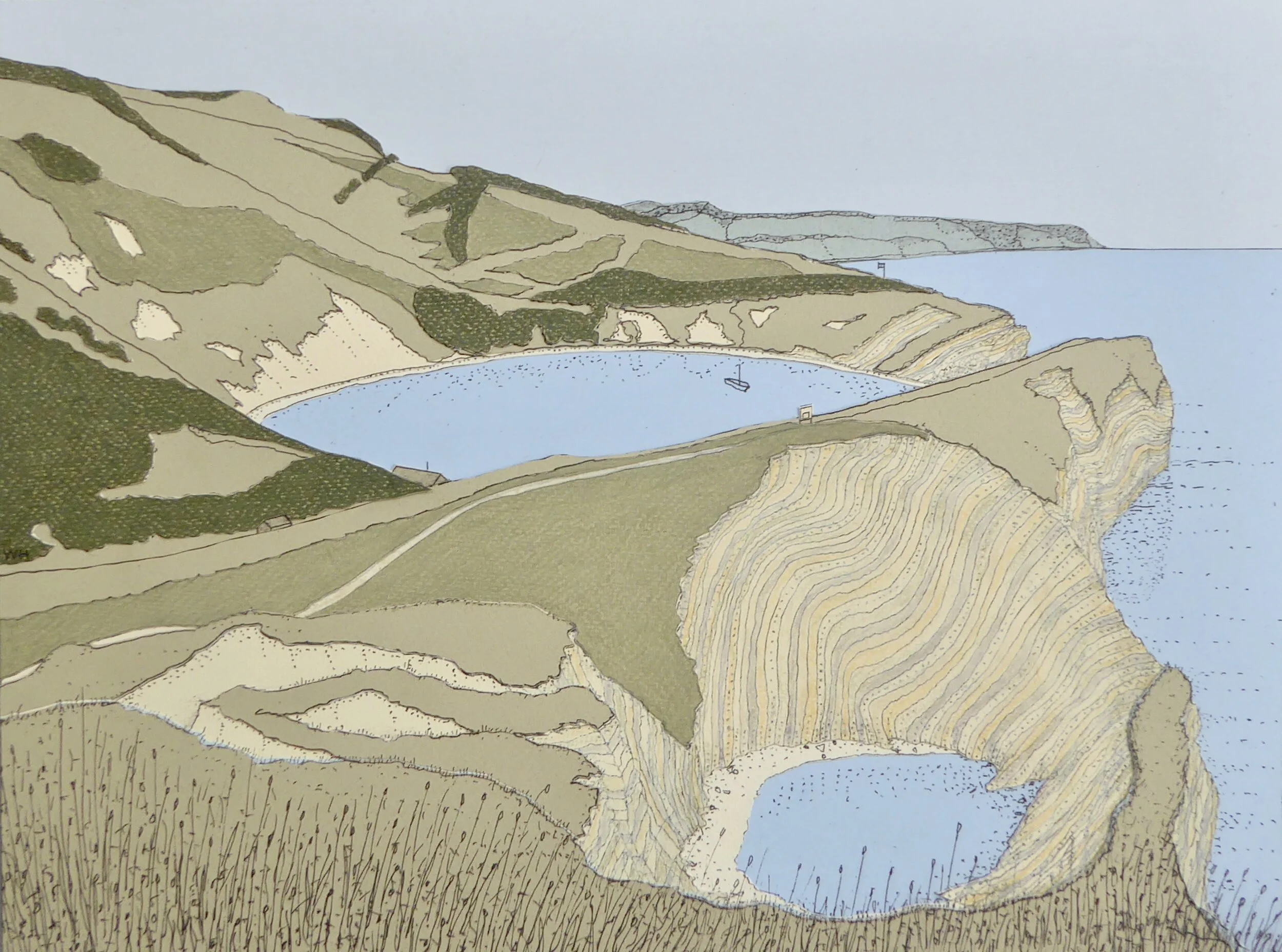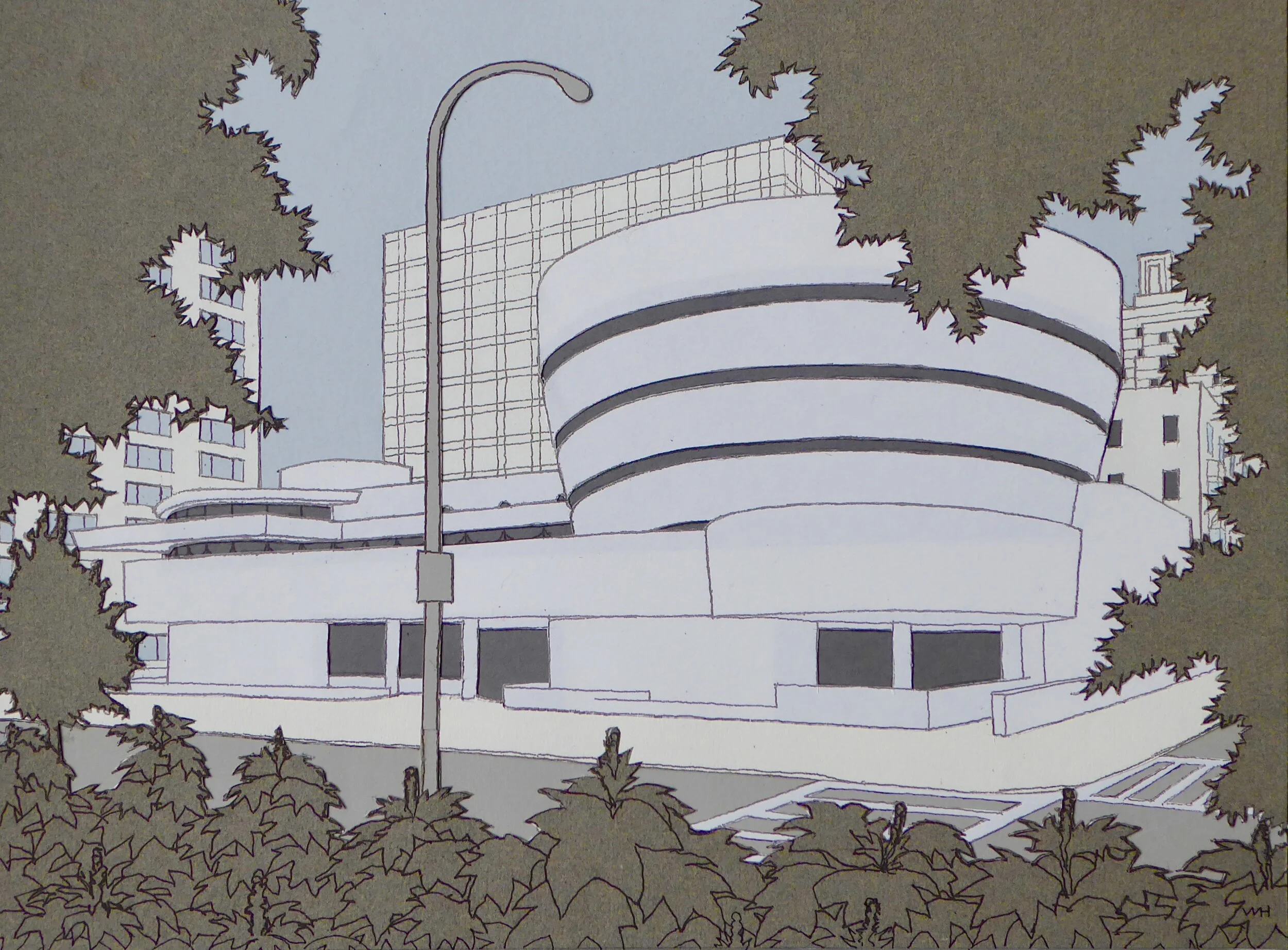Drawing has usually been the starting point for artwork, with careful pencil outlines and possibly tonal shading before often being developed as a separate crisp ink line image.
Colour effects were initially limited to watercolours, crayon colouring or oil pastels. More recently artwork has used a colour collage technique to complement the line drawing. Here the drawing is printed onto coloured sheets which are selectively cut and mounted in layers. Shading lines or darker colours are often used to give depth along with a strong perspective, in contrast to the two-dimensional more abstract quality of other images.
Buildings commonly feature, though perhaps less well known, often as groups and usually in their setting. By contrast landscapes provide a more fluid subject matter where coastal or riverside views are favoured. Formats vary from panoramic and rectangular, to square and vertical.
Reydon being close to the sea and unspoilt Suffolk countryside provides a stimulating base. From here, East Anglian subjects continue to be savoured. Travel abroad, mainly around Europe, has also provided contrasting inspiration over the years, often in significant historic locations.
Image groups start with a local focus which extends progressively further afield. Click on key images for the each selection and individual images for enlargement. Media type and image dimensions are noted, the latter as the nearest ‘A’ size. Eg A4 = 210 x 297mm; A3 = 297 x 420mm; A2 = 420 x 596mm; A4S = 297 x 297mm; A4R = 297mm diameter and A4x2 = 210 x 596mm.





